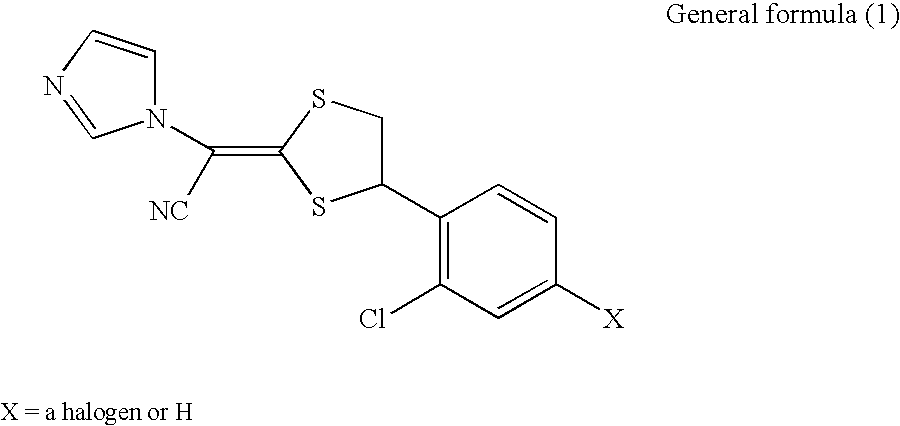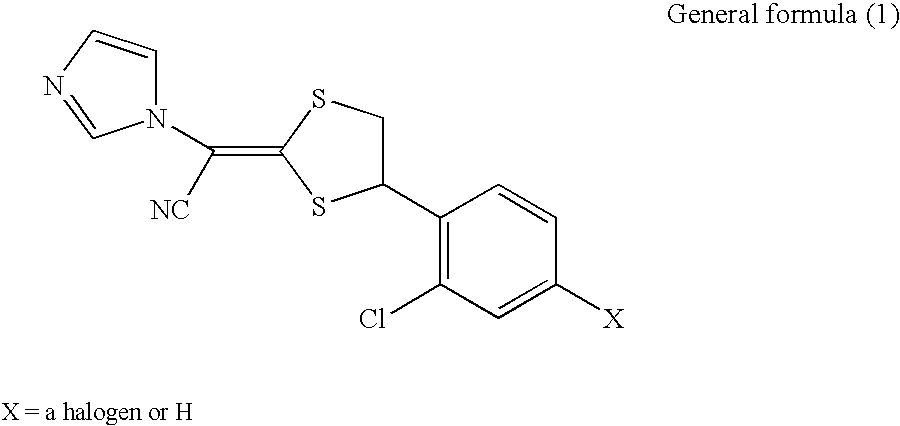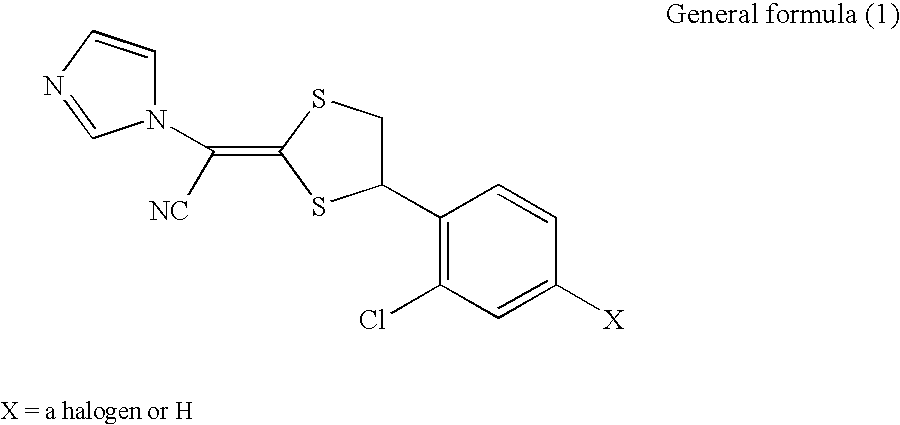Antifungal pharmaceutical composition
a technology of antifungal and pharmaceutical compositions, applied in the field of skin agents, can solve the problems of difficult to cure completely diseases, adverse effects such as hepatic dysfunction and renal dysfunction due to oral administration in a certain percentage, and achieve the effect of high transdermal absorbability
- Summary
- Abstract
- Description
- Claims
- Application Information
AI Technical Summary
Benefits of technology
Problems solved by technology
Method used
Image
Examples
example 1
Prescription
[0030]Luliconazole was dissolved by adding an appropriate amount of ethanol. To the resulting solution, hydroxypropylcellulose (“HPC-H”; manufactured by Nippon Soda Co., Ltd.) was gradually added, water was further added, and homogenization was performed (Table 1). The resultant was defined as Skin agent A for external use. A product obtained by reducing the amount of hydroxypropylcellulose in Skin agent A for external use to 1.5 mass %, and replacing the reduced hydroxypropylcellulose by ethanol was defined as Skin agent B for external use. A solution as a control was prepared by adding only ethanol to 1.2 mass % of luliconazole, and the solution was defined as Skin agent C for external use.
TABLE 1Prescription of Skin agent A for external useIngredientmass %Luliconazole1.2Hydroxypropylcellulose1.8Water23.7Ethanol73.3Total100
[0031]Form of formulations: a form of a single-phase and homogeneously dissolved solution was confirmed through a visual check.
No irritating sensati...
example 2
Prescription
[0034]Luliconazole was dissolved by adding an appropriate amount of ethanol. To the resulting solution, hydroxypropylmethylcellulose 2910 (“METOLOSE 60SH-4000”; manufactured by Shin-Etsu Chemical Co., Ltd.) was gradually added, water was further added, and homogenization was performed (Table 4). The resultant was defined as Skin agent D for external use. A solution as a control was prepared by adding only ethanol to 1.2 mass % of luliconazole, and the solution was defined as Skin agent E for external use.
TABLE 4Prescription of Skin agent D for external useIngredientmass %Luliconazole1.2Hydroxypropylmethylcellulose 29101.2Water23.6Ethanol74Total100
[0035]Form of formulation: a form of a single-phase and homogeneously dissolved solution was confirmed through a visual check.
No irritating sensation of the formulation was confirmed.
[0036]The concentration in the horny cell layer is as follows, and it was revealed that the addition of hydroxypropylmethylcellulose 2910 increased...
PUM
| Property | Measurement | Unit |
|---|---|---|
| mass % | aaaaa | aaaaa |
| mass % | aaaaa | aaaaa |
| mass % | aaaaa | aaaaa |
Abstract
Description
Claims
Application Information
 Login to View More
Login to View More - R&D
- Intellectual Property
- Life Sciences
- Materials
- Tech Scout
- Unparalleled Data Quality
- Higher Quality Content
- 60% Fewer Hallucinations
Browse by: Latest US Patents, China's latest patents, Technical Efficacy Thesaurus, Application Domain, Technology Topic, Popular Technical Reports.
© 2025 PatSnap. All rights reserved.Legal|Privacy policy|Modern Slavery Act Transparency Statement|Sitemap|About US| Contact US: help@patsnap.com



